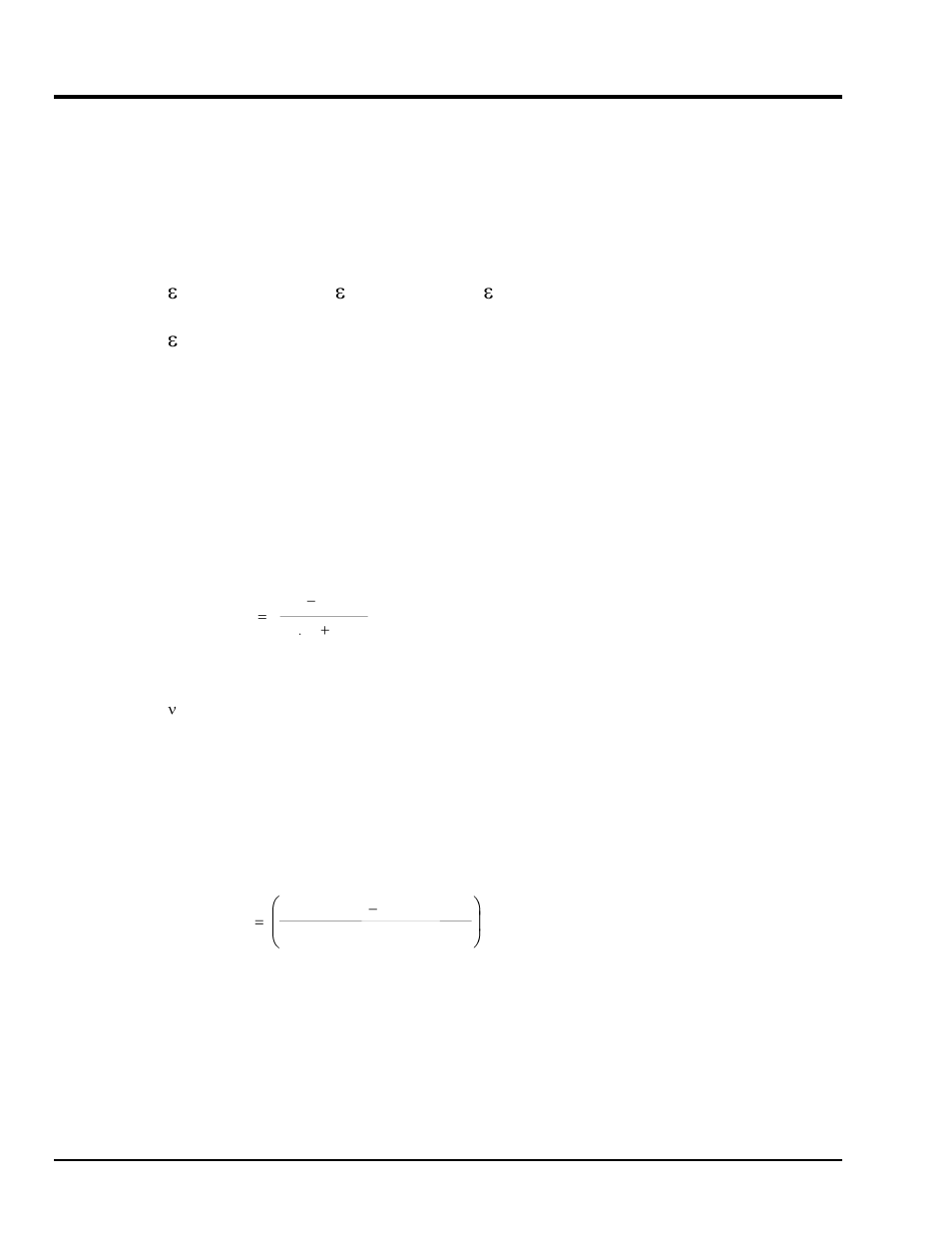Strain gauge types explained – Measurement Computing 6224 User Manual
Page 27

7-2 Strain and Pressure/Force
6224 User’s Manual
Strain Gauge Types Explained
This section uses figures to represent axial and/or bending strain to indicate the type(s) of strain that applies to a
given bridge type. It also provides simple schematics. For each type of bridge, supplemental information shows
two equations: the first is the equation used to convert voltage to strain; the second is an equation you can use to
simulate the effect on strain by applying a shunt resistor across R3. In the upcoming figures and equations,
acronyms, formulas, and variables are defined as:
is the measured strain (+ is tensile strain and -
is compressive strain).
S
is the simulated strain.
GF is the Gauge Factor, which should be specified by the gauge manufacturer.
R
g
is the nominal gauge resistance, which should be specified by the gauge manufacturer.
R
L
is the lead resistance. If lead lengths are long, R
L
can significantly impact measurement accuracy.
R
s
is the shunt calibration resistor value.
U is the ratio of expected signal voltage to excitation voltage with the shunt calibration circuit engaged.
Parameter U appears in the equations for simulated strain and is defined by the following equation:
is the Poisson’s ratio, defined as the negative ratio of transverse strain to axial strain (longitudinal) strain.
V
CH
is the measured signal’s voltage.
V
EX
is the excitation voltage.
V
r
is the voltage ratio that is used in the voltage to strain conversion equations and is defined by the
following equation:
V
r
V
CH
V
EX
V
CH
(strained)
(unstrained)
U
R
g
4R
s
2R
g
